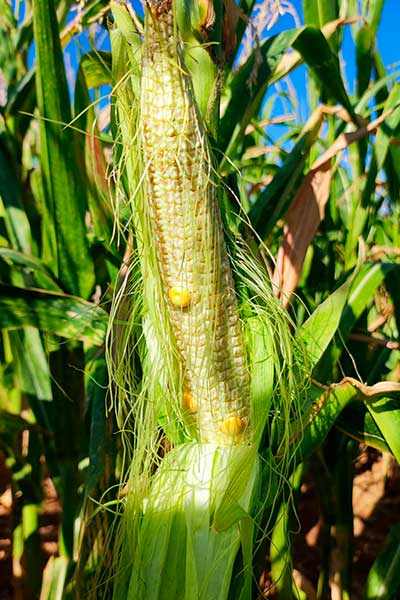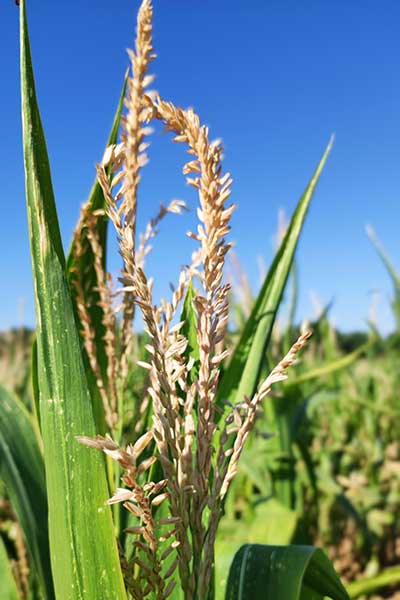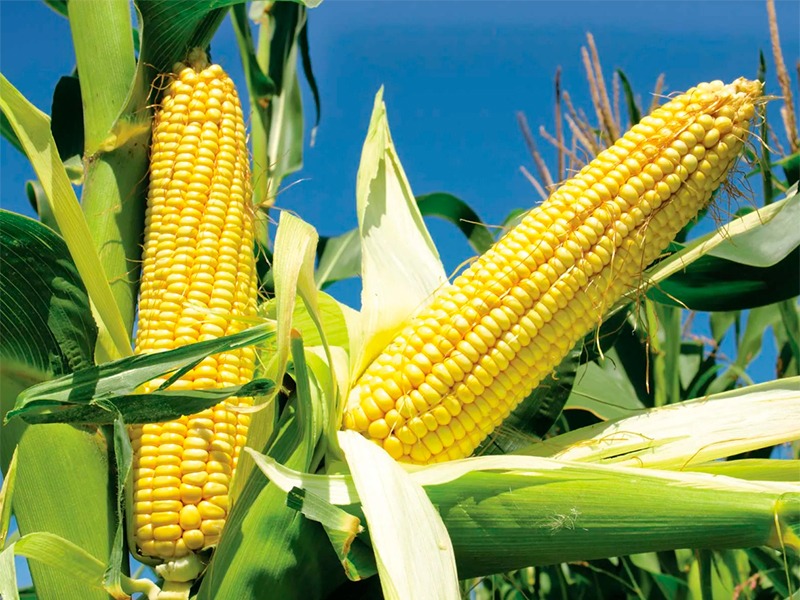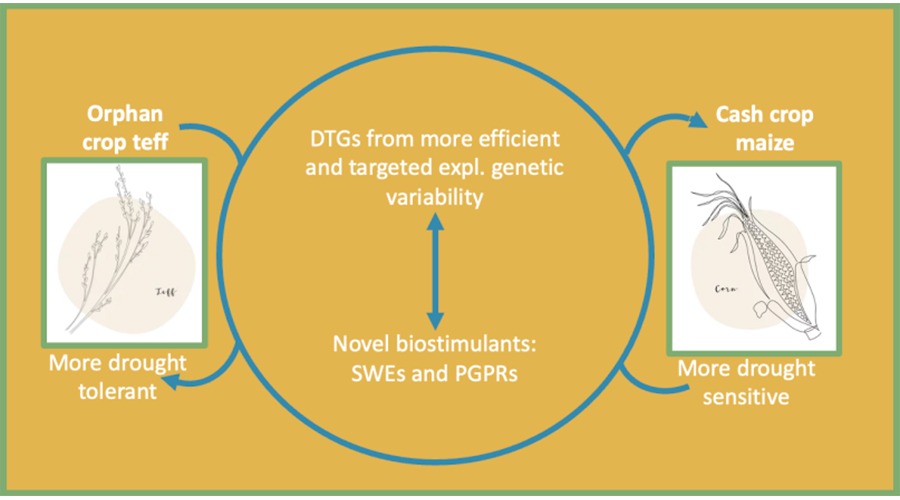OBJECTIVES
BOOSTER provides innovative strategies because it utilizes plants and associated soils that are adapted to drought to identify genetic- and biostimulant-based approaches for increasing crop drought tolerance.
Objectives and ambition:
In the genetic approach, rather than only focusing on genes involved in drought responses, emphasis will be placed on the identification of the still largely unexplored function of the non-coding regulatory sequences that determine plant yield under drought. Microbial biostimulants will be developed by isolation and characterisation of those found in soils with a long history of drought, from both where crops have been traditionally grown and from where crop wild relatives thrive. They will be selected based on their ability to form symbiotic relationships that facilitate crop resilience under drought, without incurring yield penalty. Furthermore, extracts from brown algae, representing biostimulants proven to prime plant drought responses, will be also used as a source of sustainable and renewable raw material that are produced following circular bioeconomy requirements. The synergy between the genetic and biostimulant improvements fostered by BOOSTER will render our crops more climate resilient.
The major objective of BOOSTER is to implement strategies for improving drought tolerance in European maize and Ethiopian teff, as a next step towards climate-smart agriculture. By concomitantly working on maize and teff, BOOSTER results will also provide information on the commonalities and differences in drought tolerance strategies utilized by these two cereals with stark differences in drought resilience. This additional information will allow us to explore the potential for transferring genotype- and species-specific drought responsive features from an orphan cereal like teff to a cash crop like maize (Fig. 1.1a).
BOOSTER crops species:
To maximize the effect of the genetic and biostimulant approaches, the proposal focuses on two important crop species:

European maize
The globally utilized cereal Zea mays

Ethiopian teff
The orphan cereal Eragrostis tef
genetic approach
In the genetic approach, rather than only focusing on genes involved in drought responses, emphasis will be placed on the identification of the still largely unexplored function of the non-coding regulatory sequences that determine plant yield under drought.
Microbial biostimulants
Microbial biostimulants will be developed by isolation and characterisation of those found in soils with a long history of drought, from both where crops have been traditionally grown and from where crop wild relatives thrive. They will be selected based on their ability to form symbiotic relationships that facilitate crop resilience under drought, without incurring yield penalty.
brown algae
Furthermore, extracts from brown algae, representing biostimulants proven to prime plant drought responses, will be also used as a source of sustainable and renewable raw material that are produced following circular bioeconomy requirements.
The synergy between the genetic and biostimulant improvements fostered by BOOSTER will render our crops more climate resilient

Zea mays (European maize)
Maize is a crop of global importance and is the second most cultivated crop in the European Union (hereinafter named EU or EU27) with a production of 70.4 million tons/year.
- Drought is a leading cause of yield loss in maize, especially compared to important cool season cereals such as wheat. By 2030, due to exacerbation of drought severity induced by climate change, the cost for maize yield loss in EU27 will be €2.4 bn/year and, by 2045, due to rain reduction, the increase of water consumption for irrigation will increase up to 25%
- Maize is also an important model system with numerous genetic and genomic resources that facilitate detailed molecular studies and translation of discoveries across cereal species.
- Maize represents a feedstock for the production of various products used for human consumption, livestock feed, and biofuel.
Eragrostis tef (Ethiopian teff)
Teff was domesticated in Ethiopia, where selection favoured stability under adverse conditions, resulting in maintenance of a natural stress tolerance that was lost during domestication in most conventional cereals.
- Teff belongs to the grass subfamily Chloridoideae, which contains grasses that have evolved to survive extreme environments, including drought.
- Teff is closely related to the Southern African desiccation-tolerant grass Eragrostis nindensis, which survives extreme and prolonged drought.
- Teff and E. nindensis have a high degree of collinearity and shared gene content, facilitating the identification of sequences involved in desiccation tolerance that are potential targets for improving drought resilience in cereals.
- Although teff is relatively drought tolerant, it is still affected by prolonged drought as has occurred recently. The average cost for yield losses due to increased drought is of about €0.6 bn/year.
- Hence, improving teff drought tolerance is important because teff represents the major food and nutrition security crop in the Horn of Africa, with over 90% grown in Ethiopia (5.5 million tons/year).

Thus, by using teff, a relatively drought tolerant species, and maize, a drought sensitive cereal model species, BOOSTER will identify the different mechanisms adopted by the two cereals to cope with drought. In addition, the comparison with teff will offer the unique opportunity to gain insights into the differences with desiccation tolerant cereals. The efforts to explore similarities and differences in genes and regulatory sequences involved in drought response in these species may open new avenues for the development of cereals that are simultaneously productive and resilient.


